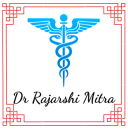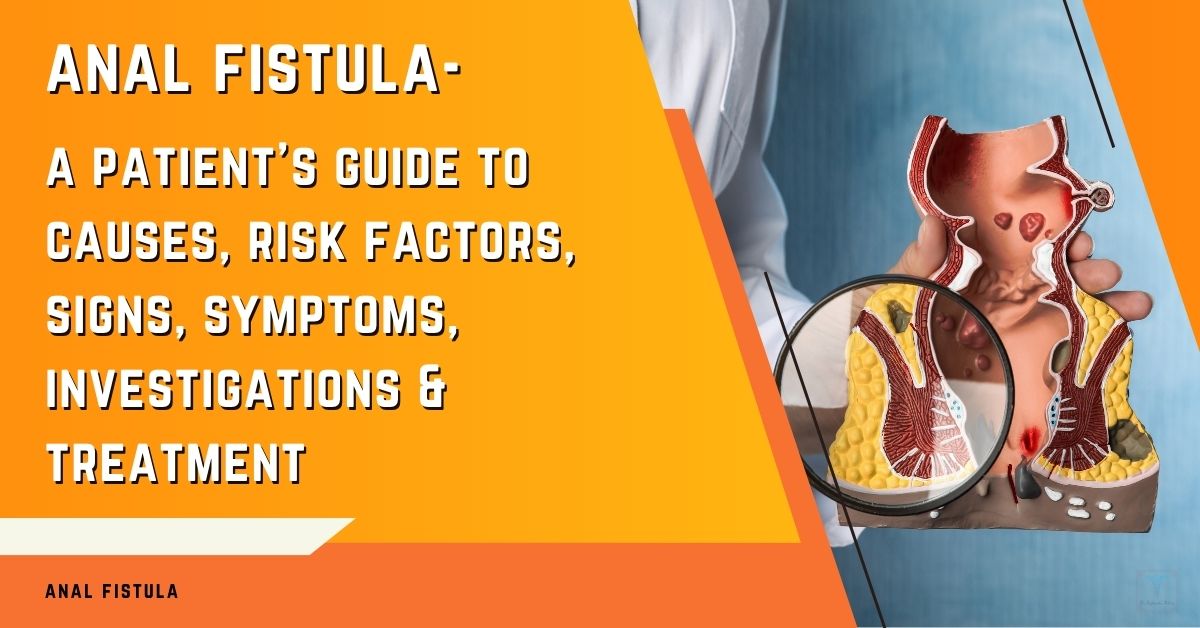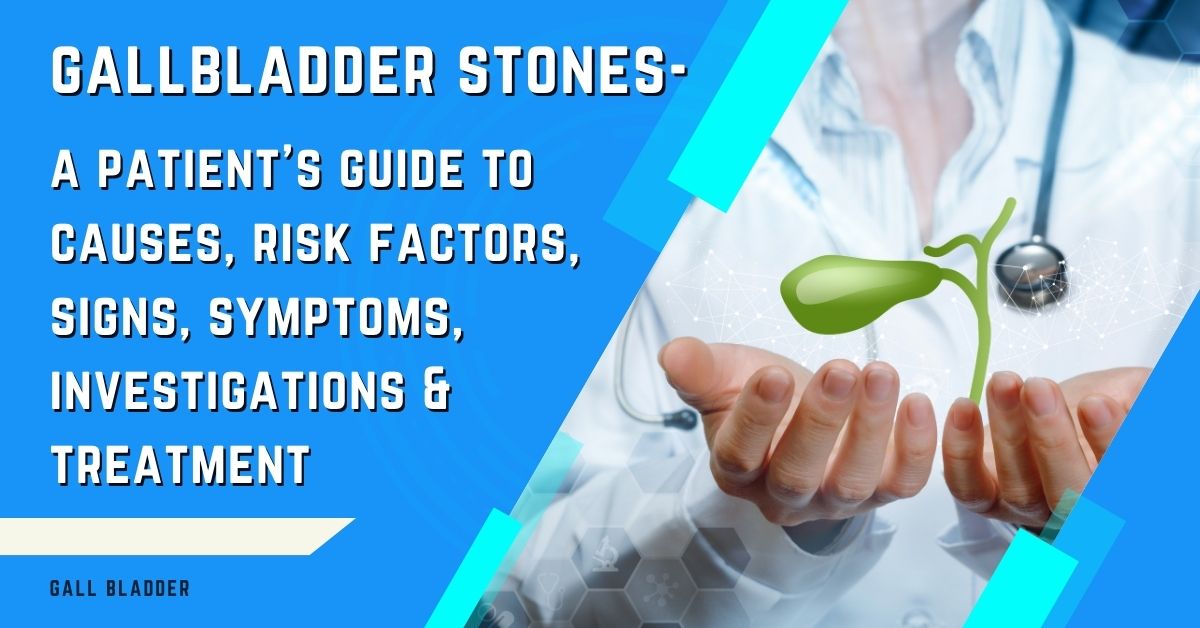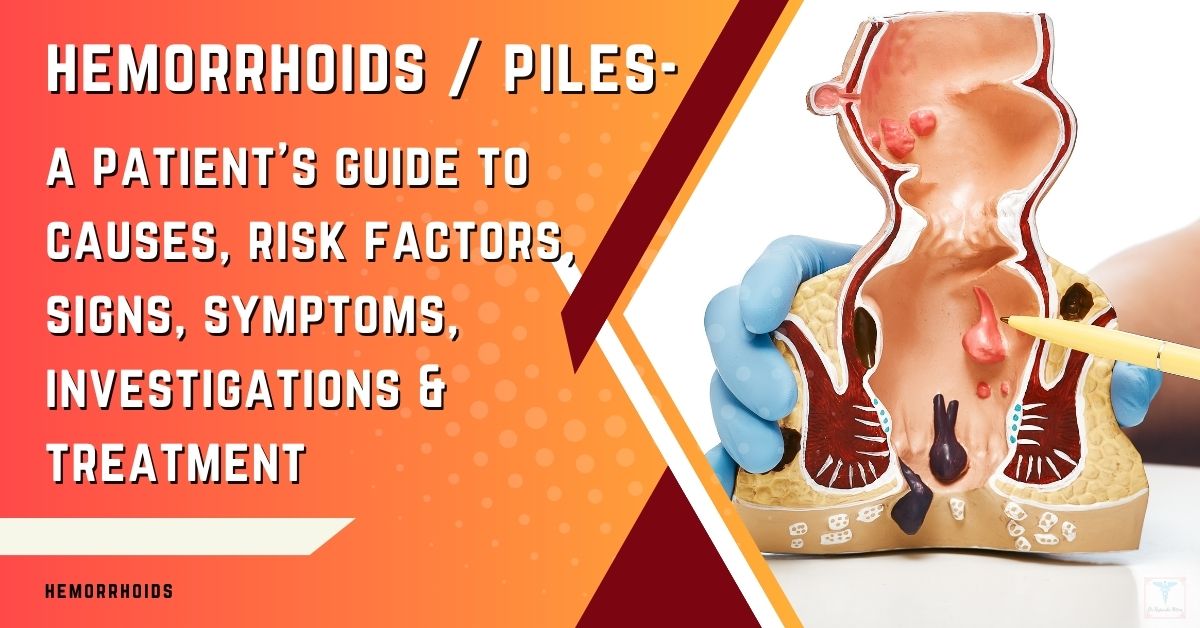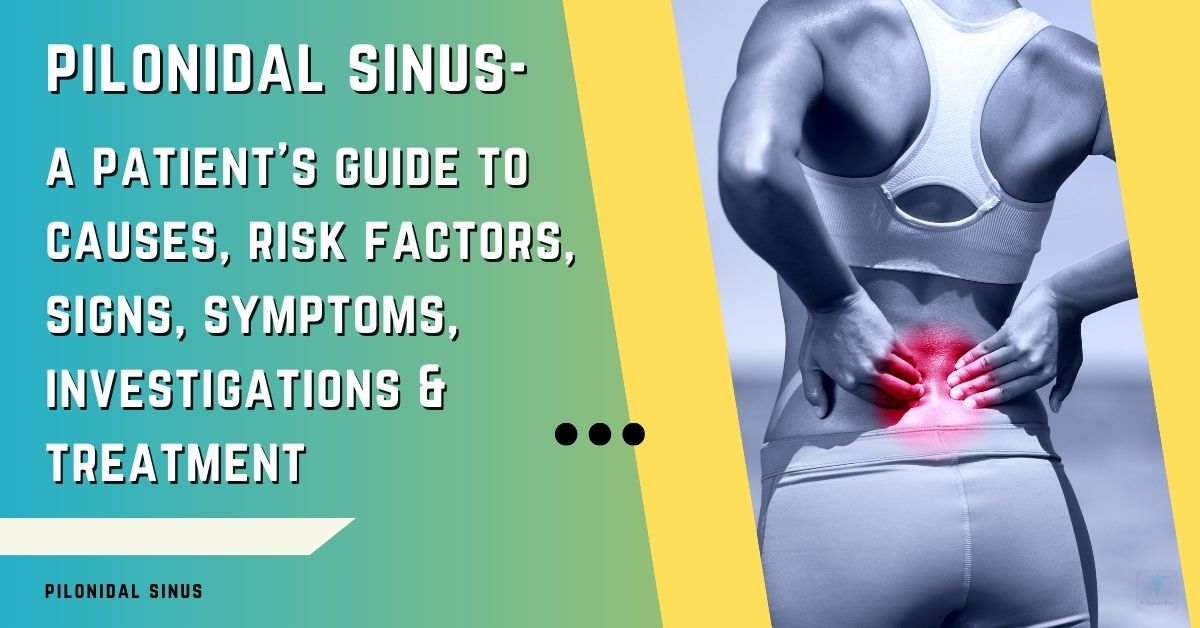Are you experiencing discomfort and wondering if it might be related to your gallbladder? Understanding where gallbladder pain occurs is the first step in identifying potential issues.
This guide, created by Dr. Rajarshi Mitra, a seasoned laparoscopic surgeon, will walk you through the specific locations where gallbladder pain can manifest, along with other key symptoms to watch out for. By the end of this guide, you’ll have a clear picture of what your pain may indicate and when to seek medical advice.
Let’s explore the nuances of gallbladder pain together.
Understanding Gallbladder Pain
What Causes Gallbladder Pain?
The gallbladder, a small pear-shaped organ located beneath the liver, plays a vital role in digestion by storing and releasing bile.
Pain associated with the gallbladder typically arises when there is a blockage, inflammation, or other issue disrupting its normal function.
Here are some common causes:
Gallstones and Biliary Colic
Gallstones are hardened deposits of digestive fluid that can form in the gallbladder. When these stones block the bile ducts, they can cause a condition called biliary colic. This often results in intense, sudden pain in the upper right abdomen. The pain is usually intermittent and may last from a few minutes to several hours.
You can learn more about gallstones from the National Institute of Diabetes and Digestive and Kidney Diseases (NIDDK).
Cholecystitis (Inflammation of the Gallbladder)
Cholecystitis is the inflammation of the gallbladder, often caused by gallstones obstructing the cystic duct which is the duct through which bile travels out of the gallbladder. This inflammation can lead to constant, severe pain, often accompanied by fever, nausea, and vomiting. It requires medical intervention.
You can find more information about Cholecystitis on the Mayo Clinic’s website (Mayo Clinic).
Other Gallbladder Issues
Besides gallstones and inflammation, other less common conditions can cause gallbladder pain, including:
- Biliary dyskinesia: A condition where the gallbladder doesn’t empty properly.
- Tumors: Though rare, tumors in the gallbladder or bile ducts can also cause pain.
- Infections: Infections in the gallbladder can also lead to pain and other symptoms.
Common Symptoms Associated with Gallbladder Issues

While pain is the most common symptom, gallbladder problems can manifest in other ways. Recognizing these associated symptoms can aid in identifying a potential gallbladder issue:
Pain Patterns
Gallbladder pain often has a distinct pattern:
- It’s typically located in the upper right abdomen, just below the rib cage.
- The pain can be described as sharp, cramping, or a dull ache.
- It may radiate to the right shoulder or back.
- It can come on suddenly and may last for several minutes to hours.
- Pain may worsen after eating a heavy or fatty meal.
Digestive Issues
Gallbladder problems can disrupt normal digestion and cause:
- Nausea and vomiting.
- Bloating or indigestion.
- Changes in stool color (pale stools).
- Jaundice (yellowing of the skin and eyes) in some cases, when the bile flow is obstructed.
Other Symptoms
Additional symptoms may include:
- Fever and chills, particularly with cholecystitis.
- Fatigue or feeling unwell.
- Loss of appetite.
Where Does Gallbladder Pain Occur?

Primary Location: The Upper Right Abdomen
The most common and primary location for gallbladder pain is the upper right quadrant of the abdomen, specifically just below the rib cage. This is where the gallbladder is situated.
It’s important to note that while this is the most typical location, pain can sometimes radiate to other areas.
Describing the Pain: Character and Intensity
The pain felt in this primary location can vary in character and intensity. Here are a few ways patients might describe it:
- Sharp Pain: Often described as a piercing or stabbing sensation, this type of pain can occur suddenly.
- Cramping Pain: This type of pain can come in waves, increasing in intensity, and then decreasing.
- Dull Ache: A constant, nagging discomfort in the upper right abdomen.
- Intensity: The intensity can vary from mild to severe. Severe pain may cause the person to seek immediate medical attention.
Referred Pain: Shoulder and Back Pain
Gallbladder pain isn’t always confined to the upper right abdomen. It can often be “referred” to other areas of the body due to the way nerves are connected. This means you might feel pain in locations distant from the gallbladder itself.
Right Shoulder Pain
One of the most common areas for referred gallbladder pain is the right shoulder. This occurs because of the shared nerve pathways between the gallbladder and the right shoulder area. The pain here is typically described as a dull ache or a deep, nagging pain.
Back Pain between the Shoulder Blades
Pain can also radiate to the back, specifically between the shoulder blades. It is often a less recognized location for gallbladder-related pain. Like the shoulder pain, this is due to the convergence of nerves.
Pain Radiating to Other Areas
In some cases, gallbladder pain can spread to other areas, which can sometimes be confusing and cause concerns.
Chest Pain and Confusion with Heart Issues
Gallbladder pain can sometimes extend into the chest, causing a feeling of tightness or discomfort. This is why sometimes it can be confused with heart issues, especially on the left side. It is essential to differentiate between chest pain of cardiac origin and that of gallbladder origin.
Pain Spreading to the Mid-Abdomen
Pain can sometimes spread from the upper right abdomen to the mid-abdomen, sometimes making it difficult to pinpoint the exact source of the discomfort.
Differentiating Gallbladder Pain from Other Abdominal Pain
It is very important to distinguish gallbladder pain from pain arising from other organs within the abdomen. Gallbladder pain is typically characterized by a sharp or cramping sensation in the upper right abdomen, which can sometimes radiate to the back or shoulder. However, the similarities in symptoms between gallbladder issues and other conditions, such as gastrointestinal or reproductive problems, can lead to confusion. It’s particularly crucial to recognize gallbladder symptoms in women, as they may experience unique manifestations due to hormonal influences or other underlying health conditions, making accurate diagnosis essential for effective treatment.
Some of the conditions that can mimic gallbladder pain are:
Stomach Ulcer or Acid Reflux
Pain from stomach ulcers or acid reflux is often located in the upper mid-abdomen and can be described as a burning sensation. It is usually associated with meals and can be relieved by antacids.
This is different from gallbladder pain which is more right-sided and might worsen with fatty foods.
Pancreatitis
Pancreatitis, inflammation of the pancreas, can also cause severe upper abdominal pain. This pain is often more centrally located in the upper abdomen and can radiate to the back. Usually, pancreatitis pain is constant and more intense. It can also be associated with nausea and vomiting.
Appendicitis
Appendicitis typically causes pain in the lower right abdomen, initially around the belly button, before moving to the lower right area. This is quite different from the upper right pain of the gallbladder, although a retrocecal appendix, which is an uncommon variant of appendicitis, can mimic gallbladder pain.
For more information, you can refer to this article on Appendicitis by Cleveland Clinic (Cleveland Clinic).
How to Identify Gallbladder Pain at Home
While self-assessment cannot replace a professional medical evaluation, understanding the nuances of your symptoms can provide valuable information for discussion with your doctor.
Here’s a guide to help you assess your pain at home:
Detailed Self-Assessment
A detailed self-assessment involves paying close attention to the characteristics of your pain and associated symptoms.
Timing of Pain after Meals
Gallbladder pain often occurs after meals, especially meals high in fat. The timing of the pain concerning your meals can be a vital clue. Ask yourself:
- Does the pain tend to occur within an hour or two after eating?
- Is the pain more pronounced after a heavy meal or a meal with fried, fatty foods?
- Is the pain worse in the evening or at night?
Associated Symptoms
Pay close attention to any other symptoms that accompany your pain:
- Do you experience nausea or vomiting along with the pain?
- Do you have bloating or indigestion?
- Have you noticed any changes in your bowel habits or the color of your stool?
- Do you have a fever or chills?
- Are you feeling fatigued or unwell in general?
What Makes the Pain Better or Worse
Understanding what alleviates or exacerbates your pain can be insightful:
- Does anything make the pain better such as antacids, changing position, or lying down?
- Is the pain triggered by a particular position, like bending over or lying flat?
- Does over-the-counter pain medication relieve the pain and if so, for how long?
When to Seek Medical Advice
While self-assessment is helpful, it is critical to know when to seek immediate medical attention.
Here are the situations when you should consult a healthcare professional:
Signs of Severe Illness
If you experience any of the following, you should seek medical help immediately:
- Severe, unrelenting pain that doesn’t subside with home remedies.
- High fever (over 100.4°F or 38°C) with chills.
- Jaundice, which is a yellowing of the skin and whites of the eyes.
- Persistent vomiting or inability to keep down fluids.
- Significant abdominal bloating.
Urgent Symptoms
Certain symptoms warrant urgent medical attention, such as:
- Severe pain that is preventing you from performing your daily activities
- Rapid worsening of the symptoms that you initially thought were mild.
- Changes in mental status like confusion or disorientation.
- Blood in the stool or urine.
When Home Remedies Fail
If home remedies and over-the-counter medications fail to provide relief or if the symptoms continue to worsen over time, it’s crucial to seek medical advice. It’s always better to err on the side of caution, especially if you have any pre-existing conditions.
Diagnosis and Treatment of Gallbladder Issues
Once you’ve recognized potential gallbladder issues through self-assessment, the next step involves confirming the diagnosis and determining the appropriate treatment.
This section outlines common diagnostic procedures and available treatment options.
Diagnostic Procedures
Accurate diagnosis is crucial for effective management of gallbladder issues. Here are some common diagnostic procedures:
Ultrasound
An abdominal ultrasound is often the first imaging test used to evaluate the gallbladder. It’s a non-invasive test that uses sound waves to create images of the gallbladder and surrounding organs.
- What it shows: Ultrasounds can detect gallstones, thickening of the gallbladder wall, and inflammation.
- Advantages: It’s readily available, relatively inexpensive, and doesn’t involve radiation.
HIDA Scan
A HIDA (hepatobiliary iminodiacetic acid) scan is a nuclear medicine test that assesses the function of the gallbladder and bile ducts.
- What it shows: It helps determine if the gallbladder is emptying correctly and can detect blockages in the bile ducts.
- When it’s used: It’s often used when an ultrasound is inconclusive or to further investigate gallbladder dysfunction.
CT scan or MRI
Computed Tomography (CT) scans and Magnetic Resonance Imaging (MRI) scans are more detailed imaging tests that provide cross-sectional images of the abdomen.
- What they show: They can identify gallstones, inflammation, and other abnormalities such as tumors.
- When they’re used: They are typically used when the diagnosis is unclear with ultrasound, or when complications are suspected, such as pancreatitis or a gallbladder perforation.
Treatment Options
Treatment options for gallbladder issues vary depending on the severity and nature of the problem.
Non-Surgical Management
In certain cases, non-surgical methods may be sufficient to manage gallbladder issues.
Simple lifestyle changes can help reduce symptoms, especially in the case of mild gallbladder problems:
- Dietary changes: Eating a low-fat diet, limiting processed foods, and reducing sugar intake can help prevent gallbladder attacks.
- Hydration: Drinking plenty of water helps with digestion and bile flow.
- Weight management: Losing excess weight can reduce the risk of gallstone formation.
Over-the-counter pain relievers like acetaminophen or ibuprofen may provide temporary relief from mild to moderate pain. In cases of severe pain, stronger analgesics may be prescribed under medical supervision.
Surgical Treatment (Laparoscopic Cholecystectomy)
Laparoscopic Cholecystectomy, which is the surgical removal of the gallbladder, is often the recommended treatment for symptomatic gallstones and severe gallbladder disease.
Laparoscopic surgery is a minimally invasive approach that offers many benefits over traditional open surgery:
- Smaller incisions: This results in less scarring and pain.
- Shorter recovery time: Patients typically recover much faster than with open surgery.
- Reduced risk of complications: There are fewer risks of infection and other post-operative complications.
You can find more about Laparoscopic Cholecystectomy at the American College of Surgeons website (ACS).
Recovery after a laparoscopic cholecystectomy is generally quick. Most patients can return to their normal activities within a few weeks. Post-operative care instructions are provided to ensure proper healing and reduce the risk of complications.
About Dr. Rajarshi Mitra, FACS
This section will provide information about your expertise and credentials to establish your authority as a laparoscopic surgeon.
Expertise in Laparoscopic Surgery
As a highly experienced laparoscopic surgeon, Dr. Rajarshi Mitra, FACS, specializes in minimally invasive surgical techniques. With over 20 years of active surgical practice, he has performed numerous successful laparoscopic procedures, including cholecystectomies, with a focus on patient safety and optimal outcomes.
His expertise extends to:
- Complex gallbladder surgeries
- Management of bile duct issues
- Advanced laparoscopic techniques
Credentials and Experience
Dr. Mitra holds prestigious credentials that underscore his commitment to excellence in surgical practice:
- Fellow of the American College of Surgeons (FACS): This designation recognizes his high standards of surgical competence and ethical practice.
- Over 20 years of active surgical practice: His extensive experience has provided him with a deep understanding of various surgical challenges and solutions.
- Specialized training in laparoscopic techniques: Dr. Mitra is proficient in the latest minimally invasive surgical procedures.
- Practicing in Abu Dhabi, UAE: He provides high-quality surgical care to the community in Abu Dhabi, UAE.
Contact Details and Practice Information
If you are experiencing symptoms of gallbladder issues, you can book an appointment with Dr. Mitra for expert consultation and care, using the following contact information:
Website: https://drrajarshimitra.com/appointment/
Phone: +971-509542791
Email: surgeon@drrajarshimitra.com
Address: https://openmylink.in/CAubp
NMC Specialty Hospital, Department of Surgery, Zayed The First St – Zone 1 – Abu Dhabi – United Arab Emirates.
Conclusion
Understanding the location and characteristics of gallbladder pain is essential for timely diagnosis and management.
This guide, provided by Dr. Rajarshi Mitra, a seasoned laparoscopic surgeon, has aimed to provide comprehensive information about gallbladder pain, from identifying its location and associated symptoms to understanding diagnostic and treatment options.
By understanding the information presented in this guide, you are better equipped to:
- Recognize the typical locations and patterns of gallbladder pain.
- Differentiate gallbladder pain from other abdominal discomforts.
- Assess your symptoms at home and determine when to seek professional medical advice.
- Understand the diagnostic procedures and treatment options available.
If you are experiencing symptoms suggestive of gallbladder issues, it’s crucial to consult with a healthcare professional for an accurate diagnosis and personalized treatment plan. Early intervention can help prevent complications and improve overall health outcomes.
Remember, this guide is for informational purposes and is not a substitute for professional medical advice. Always consult with a healthcare provider for any health concerns or before making any decisions related to your health or treatment.
Sources:
By Dr. Rajarshi Mitra, Specialist Laparoscopic Surgeon, Abu Dhabi, UAE
Disclaimer: This article is intended for informational purposes only and should not be considered medical advice. Always consult with a qualified healthcare professional for diagnosis and treatment.
